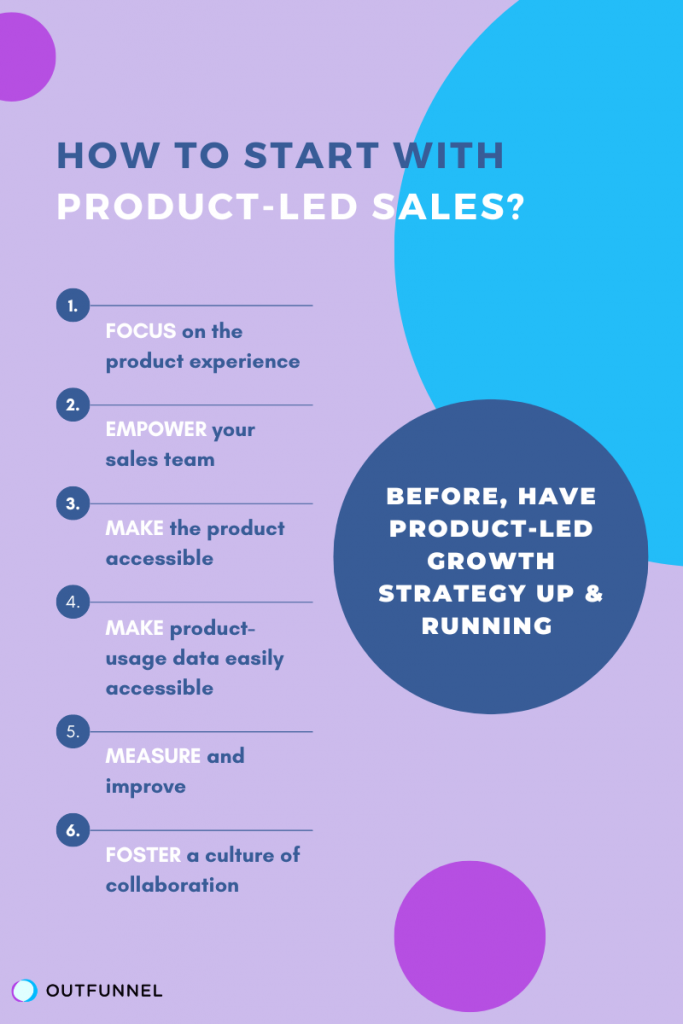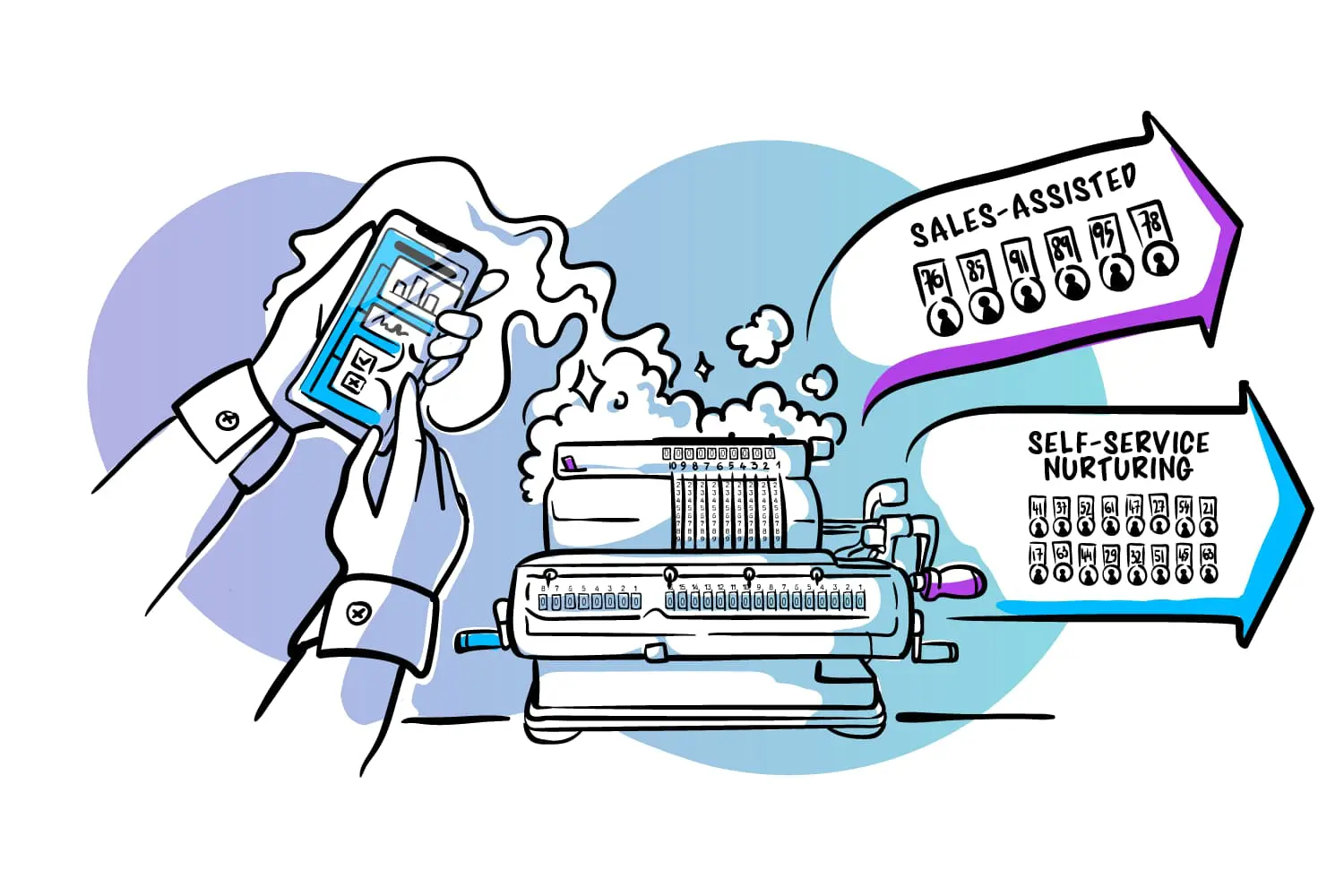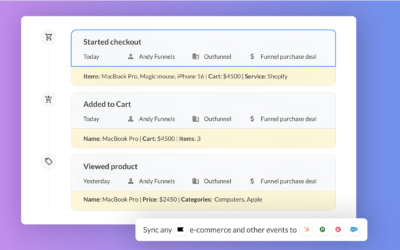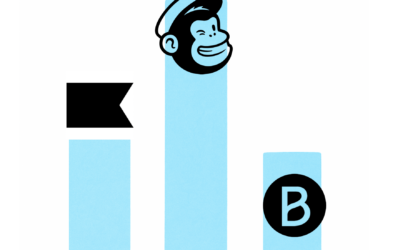Product-led sales (PLS) is product-led growth’s best friend. You can’t have product-led sales without product-led growth.
If your sales team is not getting enough customers despite working hard and you’re looking for a faster way to grow, consider using a product-led sales strategy.
Product-led sales make the life of your sales teams easier but how? PLS strategy means relying on existing users to generate revenue and behind it is the product and the value proposition that attracts new users.
That means your sales team can stop guessing and wasting time on dead-end leads.
In a product-led sales model, the product is the main driver of customer acquisition and growth. The product is designed to be easy to use and often comes with a free or self-service version that provides a great experience and allows prospects and customers to experience the value of the product for themselves. The goal is to convert free users into paying customers by demonstrating the value of the product.
Keep in mind that in a product-led sales strategy, the best salesperson is your product.
“We recognize that we are in the same boat and can’t be profitable if our product doesn’t fit our customer’s needs.
Jeff Horn, VP of Sales at ProductPlan
TOPICS WE’LL COVER
- What does it mean to be a product-led sales team?
- Difference between product-led growth (PLG) and product-led sales (PLS)
- How do product-led sales differ from traditional sales methods?
- Benefits of product-led sales
- How to start with product-led sales?
- 6 common challenges and how to overcome them
- Is product-led sales right for your business?
- The easy way to approach product-led sales
Key takeaways
- In product-led sales, the product is the main driver of customer acquisition and growth — and the best salesperson is your product.
- A PLS approach is cost-effective as it reduces the sales cycle and customer acquisition cost (CAC).
- Having a user-friendly product is critical in implementing a product-led sales strategy.
What does it mean to be a product-led sales team?
Being part of a product-led sales team means being customer-centric and using the product as the centerpiece of the sales process. This approach can lead to increased customer engagement, improved customer satisfaction, and reduced sales cycle time.
A product-led sales team is responsible for creating a positive product experience for prospects and customers that ultimately leads to a sale. This requires a deep understanding of the product, its capabilities, and how it solves customers’ problems.
A product-led sales team also plays a crucial role in helping the product team understand customer needs and feedback. In turn, the product team can use this information to improve the product and make it even more valuable to customers.
“At Flowcode, we have a long-term goal to balance the direct sales lead sources by a third, a third, a third…33% MQL, 33% PQL, 33% SQL. In the early days of a startup, most companies will see the SQL percentage higher than MQL and PQL combined, but the goal is to work closely with the product, growth, and marketing teams to balance the lead sources.
This may require gating features, altering the self-service pricing model, and testing different enterprise-level marketing messages and channels. At Flowcode, we have begun to see that the lead mix begin to shift toward a higher percentage of MQL and PQL. The first step in doing so is making sure you are measuring and tracking each lead source as soon as they hit your funnel and then watching the mix change over time.“
Jim Norton, CRO at Flowcode
Difference between product-led growth (PLG) and product-led sales (PLS)
Product-led growth (PLG) and product-led sales are two related but distinct concepts.
Product-led growth refers to a business strategy that prioritizes the customer experience with a product as the primary driver of growth. It focuses on using the product itself to generate organic growth through customer word-of-mouth, online reviews, and other forms of customer advocacy. The goal of PLG is to build a customer-centric culture where the product is the center of the customer experience and drives growth.
On the other hand, product-led sales refers to a sales strategy that prioritizes the product experience as the key driver of sales. This approach puts the product at the forefront of the sales process and uses it as a tool to generate leads and close deals. The goal of PLS is to provide prospects with a positive product experience that leads to a sale.
While both PLG and PLS focus on the product experience, PLG is more about changing the mindset of every team member and encouraging them to prioritize product quality and experience in everything they do. On the other hand, PLS is used specifically by sales teams to close deals with product-qualified leads based on product usage. Product-led growth is a broader and more fundamental term, which means product-led sales can’t exist without implementing product-led growth first.
See a more detailed comparison of product-led growth vs sales-led growth here.
How do product-led sales differ from traditional sales methods?
Product-led sales differ from traditional sales methods in five key ways:
- Focus on product experience: Product-led sales focus on the product experience as the primary driver of sales, whereas traditional sales methods focus on relationship building, cold calling, and other outreach efforts.
- Customer-centric approach: Product-led sales teams take a customer-centric approach, putting the prospect at the center of the sales process and using the product to drive sales. In traditional sales methods, the salesperson is often the focal point of the sales process.
- Sales process: The sales process in product-led sales is product-centric and often self-service, whereas traditional sales methods are more focused on face-to-face interactions and sales pitches.
- Lead generation: Product-led sales rely on the product itself to generate leads and close deals, whereas traditional sales methods rely on external lead sources such as events, cold calls, and email campaigns.
- Sales cycle time: Product-led sales have a significantly shorter sales cycle, as customers can use the product to understand its value and make an informed buying decision. On the other hand, traditional sales methods often have a longer sales cycle as they require more time to build relationships and make a sale.
“Avrios has been undergoing a Sales-led to Product-led organization transition. With this, we’ve been able to improve 4x our sales efficiency whilst reducing sales cycles.”
Francine V. Gervazio, CEO at Avrios
In conclusion, product-led sales represent a departure from traditional sales methods, where teams take a more customer-centric, product-focused approach to driving sales. See how Outfunnel saved 80% of time spent on onboarding after switching to product-led sales.
Benefits of product-led sales
Product-led sales offer seven important benefits for companies. These are:
- Increased customer engagement: By focusing on the product experience, product-led sales teams can increase customer engagement and build a more loyal customer base.
- Improved customer satisfaction: As customers are able to see the value of the product for themselves, it improves customer satisfaction and can lead to a positive product experience.
- Reduced sales cycle time: By using the product as the centerpiece of the sales process, product-led sales can significantly reduce the sales cycle time, making it easier and faster to close deals.
- Better-qualified leads: Product-led sales generate leads that are more likely to convert, as they have already engaged with the product and understand its value.
- Cost-effective: Since product-led sales teams focus on warm leads and close deals quicker, you can generate more revenue working with the same marketing budget.
- Enhanced product development: By gaining insights into how customers use the product, product-led sales teams can provide valuable feedback to the product development team, enabling them to make improvements and create an even more valuable product.
If all of those sound exciting to you, read the next section to understand how you can get started with product-led sales!
Start your product-led sales with the simple PLS Platform
Deep integrations with Pipedrive & HubSpot
How to start with product-led sales?
Before you can start implementing the product-led sales strategy, you need to have a product-led growth strategy up and running. See the exact steps for the PLG strategy here.
Starting with product-led sales involves the following steps:
- Focus on the product experience: Make the product experience the centerpiece of your sales approach. Ensure that your product is easy to use, demonstrates its value, and is easily accessible to prospects and customers.
- Empower your sales team: Provide your sales team with the training and resources they need to be effective in a product-led sales environment. This may include product training, customer-centric selling techniques, and a focus on understanding how the product can solve problems for different prospect types.
- Make the product accessible: Make the product accessible to prospects and customers, allowing them to experience it for themselves. This may include offering free trials, demos, and other self-service options.
- Make product usage data easily accessible to the sales team: Tracking must be set up and easily traceable. That’s where Outfunnel can help by identifying product-qualified leads (PQLs) and displaying them in your CRM.
- Measure and improve: Continuously measure the success of your product-led sales approach and make improvements as needed. Use customer feedback and time-to-value (TTV) and other PLG metrics to identify areas for improvement and make changes to ensure that your product-led sales approach is as effective as possible.
- Foster a culture of collaboration: Encourage collaboration between your sales and product teams, so that both teams can work together to improve the product and the sales process.
Remember, starting with product-led sales requires a shift in focus, culture, and approach. But as we saw above, it can lead to improved customer engagement, increased revenue, and a more effective sales process. See key takeaways and tips from well-known and early-stage product-led growth companies here.

6 Common challenges and how to overcome them
Product-led sales can present six common challenges, but with the right approach, they can be overcome. These include:
- Lack of control over the sales process: Product-led sales can be less controlled than traditional sales methods, as customers may not follow the expected sales journey.
– How to overcome it?
Focus on creating a seamless and intuitive product experience so that customers can easily understand the value of the product and make an informed buying decision. Keep in mind the importance of using the right CTAs as customers try out your product, so they can be guided down the sales funnel.
- Difficulties in tracking and measuring success: It can be difficult to track and measure the success of a product-led sales approach, as the sales process is more self-service and less direct.
– How to overcome it?
Use a range of metrics, including customer feedback, product usage data, and conversion rates, to measure the success of your product-led sales approach.
- Product-usage data not easily accessible for sales: Sales teams often struggle with too many different tools when trying to gather product-usage data, which is time-consuming.
– How to overcome it?
Provide sales teams with a PLS tool that identifies PQLs and offers full context about product usage right inside the CRM.
- Resistance from sales teams: Some sales teams may resist the transition to product-led sales, as it requires a change in their approach and the skills they need to be successful.
– How to overcome it?
Provide sales teams with training and support to help them transition to a product-led approach and succeed in their new role.
- Balancing self-service and customer engagement: Product-led sales can be too self-service, leaving prospects and customers feeling disconnected from the sales process.
– How to overcome it?
Strike a balance between self-service and customer engagement, offering prospects and customers the right level of support and interaction to help them make an informed buying decision.
- Balancing product and sales goals: Product and sales teams may have different goals and objectives, making it difficult to balance product development and sales efforts.
– How to overcome it?
Foster collaboration and alignment between product and sales teams, so that both teams can work together to achieve common goals.
Those might look like a lot of challenges, but they can be easily overcome with the right approach. The most important thing is to focus on creating a seamless and intuitive product experience and fostering collaboration between product and sales teams.
Is product-led sales right for your business?
Whether product-led sales is right for your business depends on various factors, including your target audience, the nature of your product, your current sales processes and strategies, and your business goals.
Here are a few questions to help you determine if product-led sales is right for your business:
- Is your target audience tech-savvy and familiar with SaaS products? Product-led sales is most effective when your target audience is familiar with SaaS products and is looking for an easy and convenient way to experience the value of your product.
- Is your product easy to use and understand? Product-led sales is most effective when your product is easy to use and understand. If your product is complex or requires extensive training, a product-led sales approach may not be the best fit.
- Are you looking for a more efficient and cost-effective sales process? Product-led sales is often more efficient and cost-effective than traditional sales processes. By providing a free version of your product, you can let prospects and customers experience the value of your product for themselves and make an informed decision about purchasing.
- Do you want to drive customer acquisition and growth? Product-led sales are a great way to drive customer acquisition and growth. By focusing on providing a great product experience, you can attract and retain more customers, drive revenue growth, and improve customer satisfaction.
- Are you prepared to invest in product development and support? Product-led sales require investment in product development and support. You need to ensure that your product is high-quality and provides a great experience to attract and retain customers.
If you answer yes to these questions, product-led sales is a good fit for your business. However, it’s important to consider your specific circumstances and goals and to weigh the potential benefits and challenges of a product-led sales approach before making a decision.
The easy way to approach product-led sales
Switching to product-led sales can seem like a lot of work. To make this journey as smooth as possible, use the Outfunnel Product-Led Sales Platform to start making decisions based on your product usage and see this data right in your CRM. Get early access and make your sales process more objective and data-driven to decrease the time spent on dead-end leads by up to 15% and uplift lead-to-win conversion rates by 32%.
Optimize sales activities and use Outfunnel to get started with product-led sales.
Spend 35% less time on dead-end leads by using product usage data right in your CRM.
Deep integration with Pipedrive. (HubSpot, Salesforce, and Copper coming soon)



